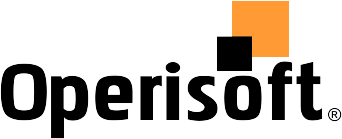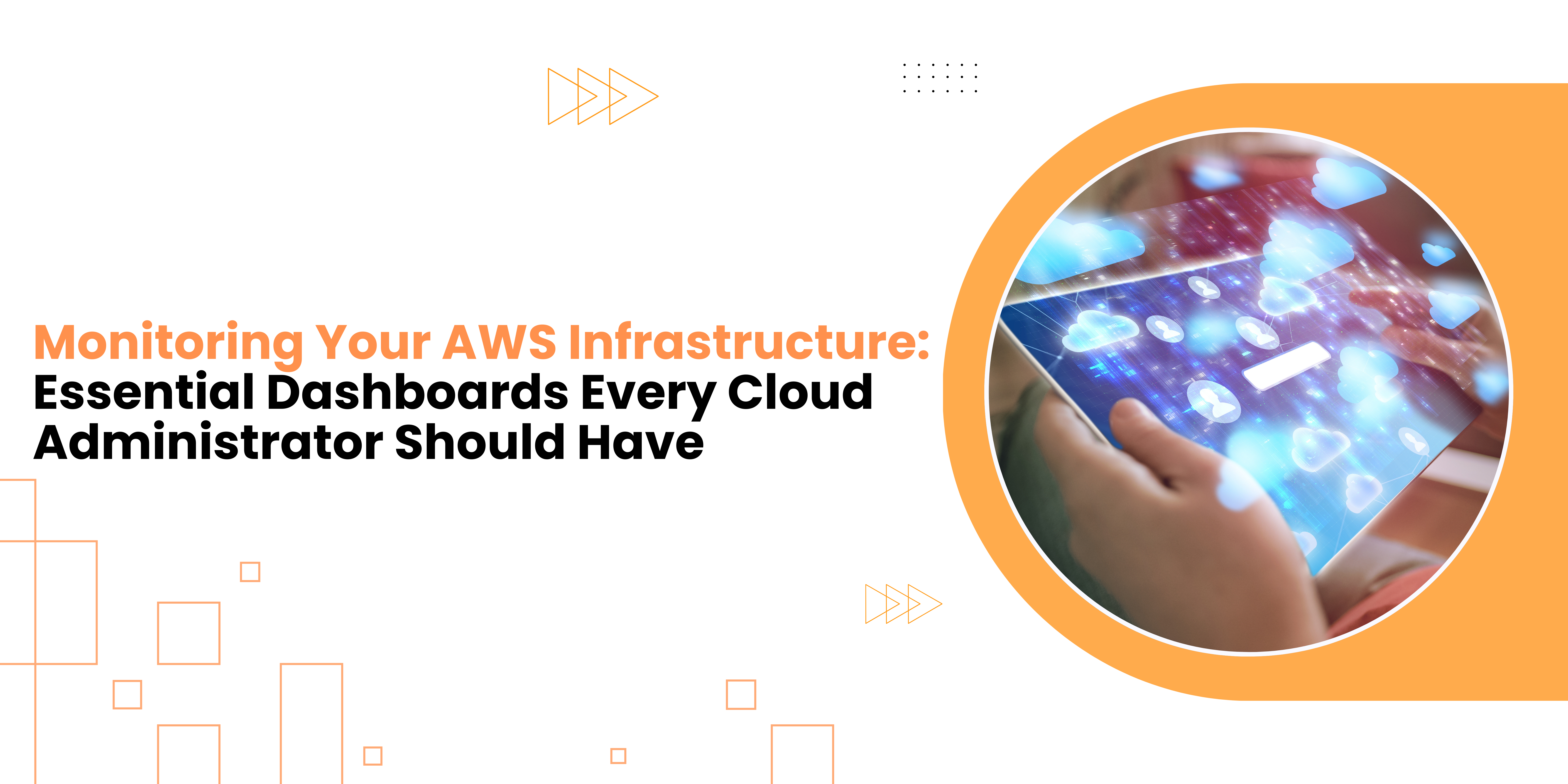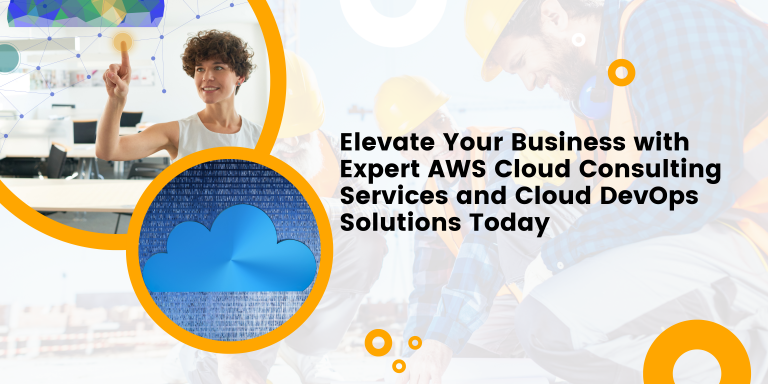In the rapidly evolving world of cloud computing, maintaining the performance, security, and reliability of your AWS infrastructure is paramount. As organizations increasingly rely on cloud environments, effective monitoring becomes an important aspect of cloud management. AWS monitoring services, particularly AWS CloudWatch, offer powerful tools that provide deep insights into your cloud infrastructure’s health and performance. By implementing AWS monitoring best practices and leveraging the right dashboards, cloud administrators can ensure seamless operations, enhance observability, and maximize the benefits of AWS monitoring. This blog explores the essential dashboards every cloud administrator should have to stay ahead in managing AWS infrastructure.
The Importance of Monitoring in AWS Environments
As businesses increasingly rely on cloud services, the complexity of managing these environments grows. A well-monitored AWS infrastructure can help prevent downtime, optimize resource usage, and enhance security. Dashboards, in particular, play a crucial role in providing real-time insights into various aspects of your cloud environment. These visual tools allow administrators to track performance metrics, detect anomalies, and respond quickly to issues, thereby maintaining the health and efficiency of the infrastructure.
Understanding the Growing Need for Real-Time Monitoring
With the rise in cloud adoption, the demand for real-time monitoring has never been greater. According to recent studies, cloud computing is projected to grow significantly in the coming years, driving the need for advanced monitoring solutions. Real-time monitoring helps organizations stay ahead by providing immediate insights into system performance, security threats, and cost management. Trends like the integration of monitoring with DevOps practices, automation, and predictive analytics are becoming increasingly popular, making monitoring not just a necessity but a strategic advantage.
Challenges Faced by Cloud Administrators
Managing an AWS environment comes with its own set of challenges. Cloud administrators often grapple with issues such as overseeing multi-account environments, detecting and mitigating security threats, managing costs, and ensuring compliance with industry regulations. Without the right monitoring tools, these challenges can lead to inefficiencies, increased costs, and security vulnerabilities. However, by leveraging the right dashboards, administrators can transform these challenges into opportunities for optimization and growth.
Essential AWS Dashboards for Effective Monitoring
To help you navigate the complexities of AWS management, here are some essential dashboards that every cloud administrator should have:
1. AWS CloudWatch Metrics Dashboard
The AWS CloudWatch Metrics Dashboard is the cornerstone of monitoring in AWS. It provides a comprehensive view of system metrics such as CPU usage, memory, disk I/O, and network traffic.
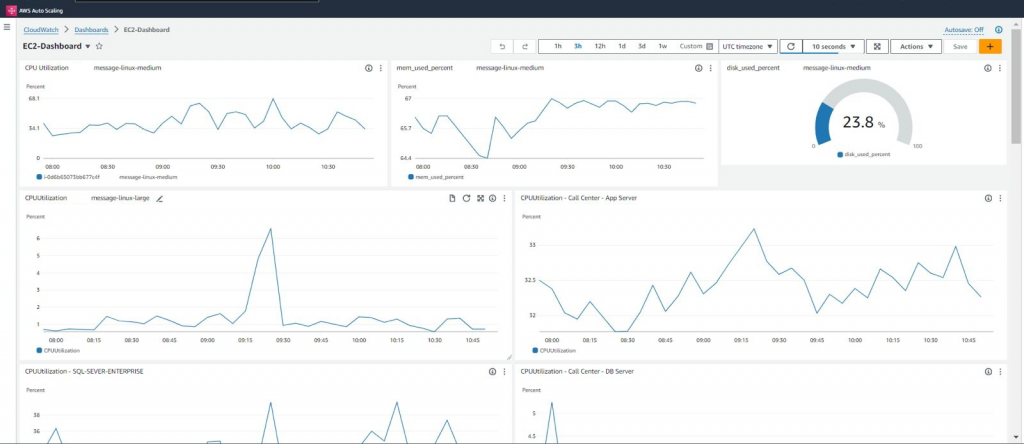
This dashboard is highly customizable, allowing you to include application-specific metrics that are critical to your operations. For example, setting up alarms for unusual CPU spikes can help prevent potential outages by alerting you before issues escalate.
2. AWS Cost and Usage Dashboard
Cost management is a significant concern for organizations utilizing cloud services.
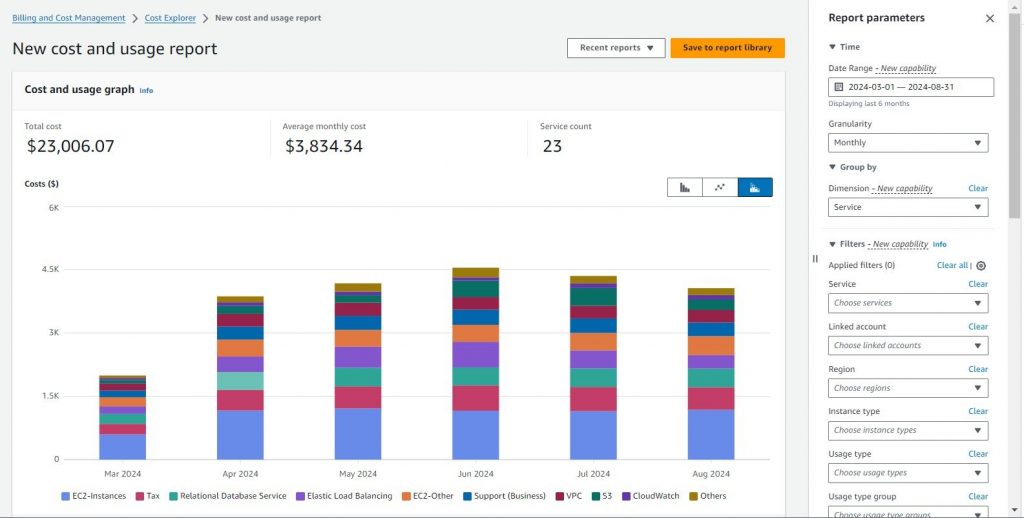
The AWS Cost and Usage Dashboard tracks real-time cost data and usage patterns across all your services. By monitoring this dashboard, you can quickly identify cost anomalies and optimize resource usage. For instance, if you notice a sudden spike in S3 usage, the dashboard can help you investigate the cause and take corrective action to avoid unexpected charges.
3. AWS CloudTrail Insights Dashboard
Security is a top priority in any cloud environment, and the AWS CloudTrail Insights Dashboard plays a crucial role in maintaining it. This dashboard monitors account activity and detects unusual behaviour, making it invaluable for security and compliance monitoring. For example, if there’s an unauthorized access attempt or an unexpected configuration change, the dashboard will alert you, enabling a swift response to potential security threats.
4. AWS Lambda Monitoring Dashboard
Serverless computing with AWS Lambda is becoming increasingly popular, and monitoring these functions is essential for maintaining performance. The AWS Lambda Monitoring Dashboard tracks key performance metrics such as invocation counts, errors, and duration. By monitoring these metrics, you can identify bottlenecks and optimize your functions for better reliability and efficiency. For example, monitoring Lambda errors can help you pinpoint issues and improve the overall reliability of your serverless applications.
5. AWS RDS Performance Dashboard
Databases are the backbone of many applications, and ensuring their performance is critical. The AWS RDS Performance Dashboard monitors the health of your databases, including query performance and resource utilization. This dashboard helps in tuning your databases and identifying slow queries that could be impacting application performance. For example, you can use the dashboard to scale RDS instances based on real-time performance data, ensuring your database can handle increasing loads.
6. Security and Compliance Dashboard
Maintaining security and compliance in a cloud environment is a continuous process. The Security and Compliance Dashboard integrates findings from AWS Security Hub, AWS Config, and AWS GuardDuty, providing a consolidated view of security risks and compliance status. This dashboard is particularly useful for organizations that need to adhere to industry standards like PCI DSS. For example, it allows you to monitor your compliance status and address any deviations before they become significant issues.
7. Network Monitoring Dashboard
Network performance is critical to the overall health of your cloud infrastructure. The Network Monitoring Dashboard tracks VPC flow logs, network latency, and bandwidth usage, helping you detect and resolve network-related issues. For example, if you notice unusual traffic patterns, the dashboard can help you investigate potential security threats such as DDoS attacks and take immediate action to mitigate them.
Case Scenarios with Solutions
Case Scenario 1: Managing Unexpected Cost Spikes
Problem:
A medium-sized e-commerce company, ShopNGo, experienced a sudden increase in its AWS bill, particularly in S3 storage and EC2 usage. The finance team struggled to identify the cause, risking budget overruns.
Solution: AWS Cost and Usage Dashboard
- Action Taken:
The cloud team used the AWS Cost and Usage Dashboard to pinpoint the spike in S3 usage due to a recent marketing campaign and underutilized EC2 instances running 24/7. - Outcome:
By implementing data lifecycle policies and adjusting EC2 instance usage with auto-scaling, ShopNGo reduced its AWS costs by 30% in the following month.
Case Scenario 2: Resolving Application Performance Issues
Problem:
DataFlow Solutions, a SaaS provider, faced frequent application slowdowns due to suspected database issues, leading to customer dissatisfaction.
Solution: AWS RDS Performance Dashboard
- Action Taken:
The technical team utilized the AWS RDS Performance Dashboard to identify CPU-intensive queries and long-running transactions causing bottlenecks. They optimized queries, scaled the RDS instance, and implemented connection pooling. - Outcome:
Application response times improved by 50%, and the dashboard now helps proactively manage database performance.
Conclusion
Effective monitoring of your AWS infrastructure is not just about identifying issues—it’s about proactive management, ensuring optimal performance, and safeguarding your cloud environment. By integrating AWS monitoring services like AWS CloudWatch and adhering to AWS monitoring best practices, cloud administrators can achieve a comprehensive view of their infrastructure. The right dashboards enhance observability and provide actionable insights that drive efficiency and reliability. Ultimately, embracing these tools and practices unlocks the full benefits of AWS monitoring, empowering organizations to maintain robust and resilient cloud operations.Ready to take your AWSmonitoring to the next level? Explore the monitoring tools offered by Oprisoft, and start building your dashboards today. Need help? Consider reaching out for a consultation or explore additional resources to learn more about optimizing your cloud environment.
